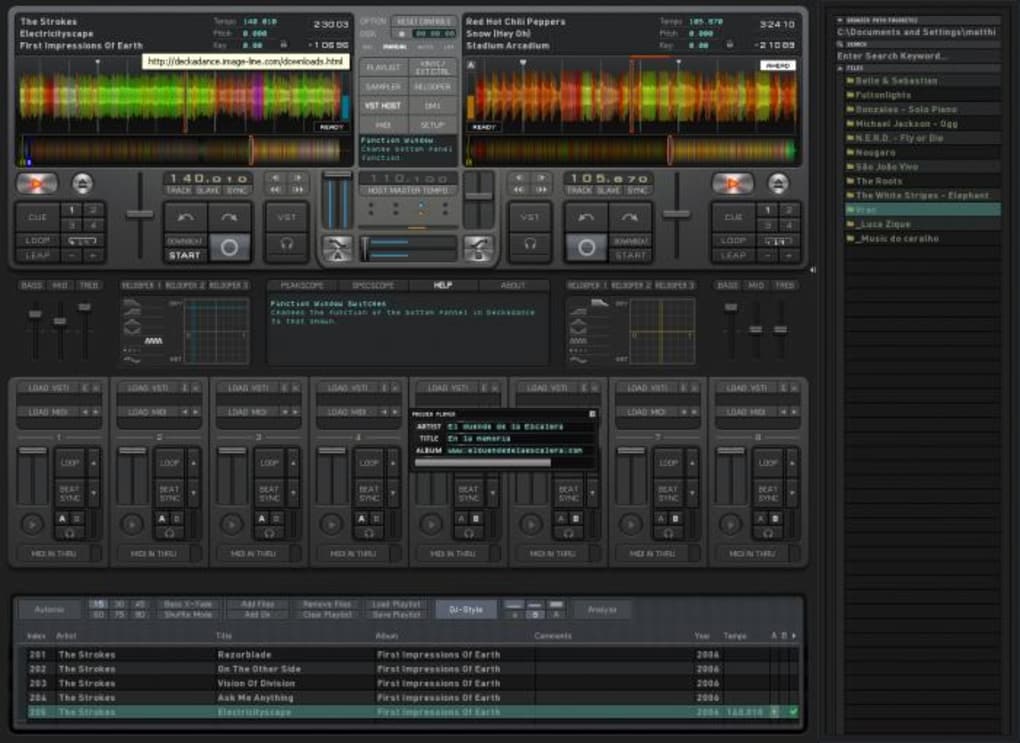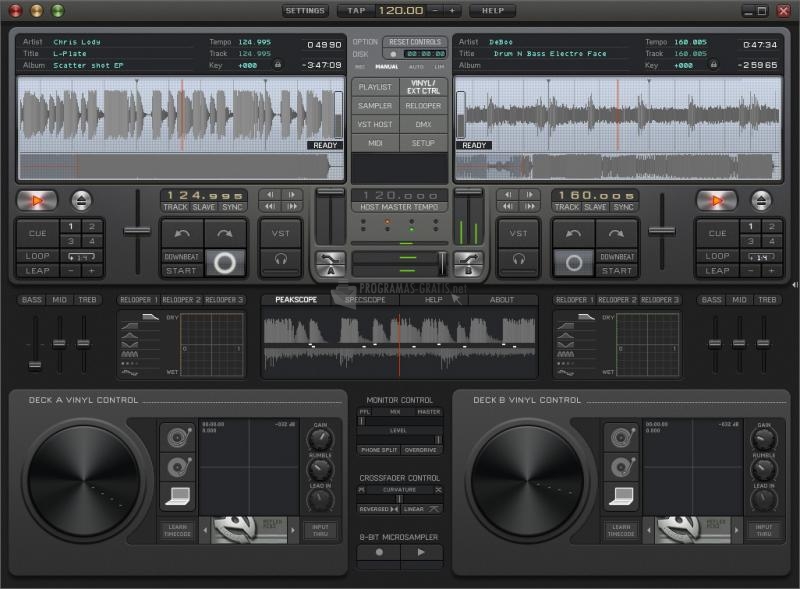
- DECKADANCE 2.3 DOWNLOAD DRIVERS
- DECKADANCE 2.3 DOWNLOAD DRIVER
- DECKADANCE 2.3 DOWNLOAD PC
- DECKADANCE 2.3 DOWNLOAD MAC
Try selecting the 'Slow decoder analysis mode' & 'Disable Elastique master tempo and keylock engine' options.
DECKADANCE 2.3 DOWNLOAD DRIVER
There are a number of options on the Preferences panel that can aid in reducing CPU load and stuttering if you find increasing the latency AND using an ASIO driver is not successful. Experimentation will help you to determine what is suitable for your needs.Įliminating audio glitches: The shortest latency achievable without overloading the CPU and stuttering, will depend on your soundcard and computer speed. 10 ms or less (441 samples 44.1 kHz) ) is desirable if greater responsiveness is required. 20 ms (882 samples 44.1 kHz) is sufficiently short for most DJ work. Soundcard latency is expressed in milliseconds or samples. Generally, shorter latencies put more load on your CPU (which can cause audio stuttering), however short latencies are desirable for greater 'responsiveness' when scratching, for example. This is a working buffer with which Deckadance performs mixing operations.
DECKADANCE 2.3 DOWNLOAD MAC
OSX, Mac users can also check out the 'Aggregate Device Editor' that allows you to set up custom inputs/outputs from multiple audio devices also. This will allow you to aggregate several audio devices into one to work with Deckadance. Windows users will have access to the ASIO4ALL universal soundcard driver included in the Deckadance installation. Options available in this menu depend on the soundcard devices connected to your computer. This is your Soundcard or audio interface device labeled by the name of the soundcard driver.
DECKADANCE 2.3 DOWNLOAD DRIVERS
Windows: If your audio interface does not have native ASIO drivers we recommend using ASIO4ALL soundcard driver. show this device's control panel - Opens the soundcard driver interface.DVS - For DVS 'scratching' we suggest that you disable the master tempo engine and reduce the latency as low as possible around (88 samples for an average computer and soundcard with good ASIO drivers).We also recommend multiples of this latency in case longer latencies are required: 256, 512, 1024, 2048.

Elastique - When Elastique master tempo engine is active, a minimum suggested latency is 128 samples.Generally - For most DJ work there is no need to set a latency below 256 samples (~5 ms 44.1 kHz).The ideal buffer is the smallest your computer can manage without causing glitches. As the latency is increased the delay between moving a MIDI/interface control and hearing/seeing the result is at least equal to this setting (in ms). Latency - This is a working buffer (breathing space) used to avoid CPU overload.44100 Hz (44.1 kHz) is most common although some interfaces use 48000 Hz (48 kHz).

Sample rate - Select the play-back frequency of your audio interface.Are you ready to test? Make sure no one has been fiddling with the amplifier volume controls!

DECKADANCE 2.3 DOWNLOAD PC
PC users: We recommend using the ASIO4ALL driver if you don't have specific hardware in mind.

Windows users can use ASIO4ALL while OSX, Mac users can use the Aggregate Device Editor. NOTE: With the ability to use of 5 pairs of audio inputs and 6 pairs of outputs, you may find it useful to aggregate the inputs/outputs from several audio interfaces in Deckadance.


 0 kommentar(er)
0 kommentar(er)
